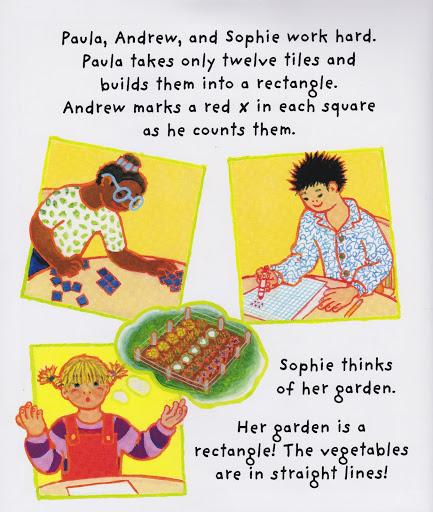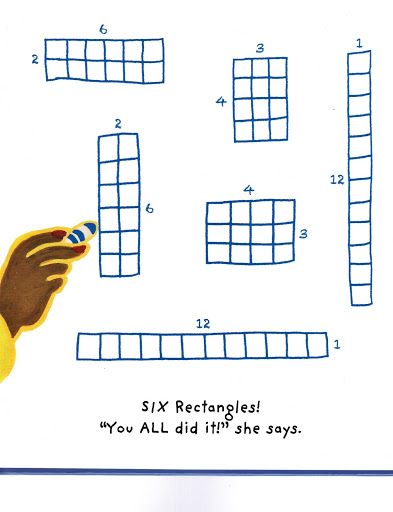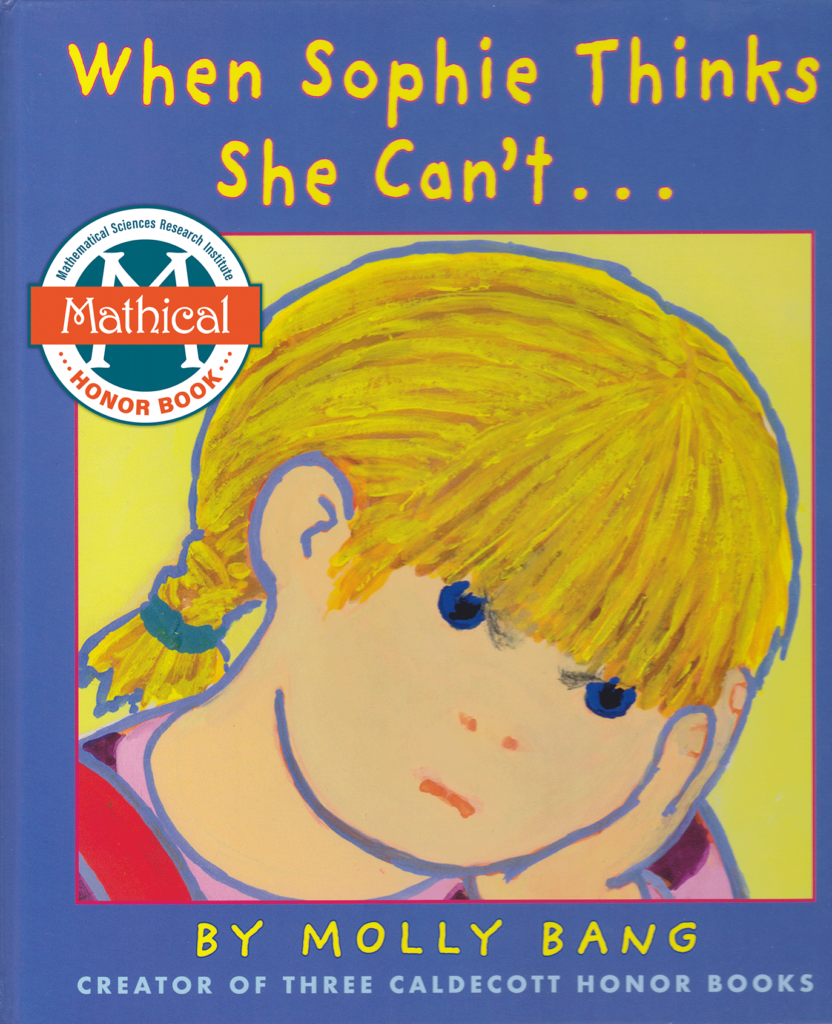¡También se puede aprender matemáticas a la hora del cuento! Intente crear sus propias preguntas.
Activity Summary
Use this storybook guide with the book “When Sophie Thinks She Can’t…” Many public libraries have this book. This is a Mathical Award honor book.
Reading guide
About the Story
This book begins with an insult: Sophie’s sister says Sophie is not smart because she can’t solve a geometric puzzle. Sophie is devastated: “I can’t do ANYTHING!” But Sophie’s teacher says, “You haven’t figured it out … YET” and encourages the class to keep working. Sophie and her classmates tackle a puzzle involving rectangles. At first they struggle. But they don’t give up, and each child thinks hard and uses their own method to solve the problem. Sophie’s successful method draws on a vegetable garden. She concludes, “I’m getting SMARTER!”

Words to Learn
MATH WORDS
rectangle, square, sides, right angle, opposite sides, equal length, parallel, graph paper
About the Math and More
As Sophie and her classmates tackle the problem, your child can learn:
- How to develop a “growth mindset”—the attitude that you are not necessarily born with math ability but can get better and better at math with hard work and effort.
- The difference between rectangles and squares.
- How a square is a special type of rectangle.
- How to build rectangles out of a given number of squares.

Math Talk During Reading
- TALK ABOUT BEING BORN SMART
What did the teacher mean by flexing the muscles? Did she agree that children are born smart in math? What did she mean by thinking hard? Why is ‘YET’ so important? - TALK ABOUT RECTANGLES AND SQUARES
Why is a square also a rectangle?” (Both have 4 straight sides and 4 right angles.) “Is a rectangle always a square?” (Not unless all four sides of the rectangle are the same length.) “Is Sophie’s rectangle really a rectangle? Why?”
Try to come up with some of your own questions and comments, too!
Activity After Reading
Make your own rectangle puzzles: With your child, cut out a lot of little squares. Then take 4 and ask your child to make as many different rectangles as they can. Then do the same for 6 squares, 8 squares, etc. Write the numbers on the sides of the rectangles, just as Sophie’s teacher did.
